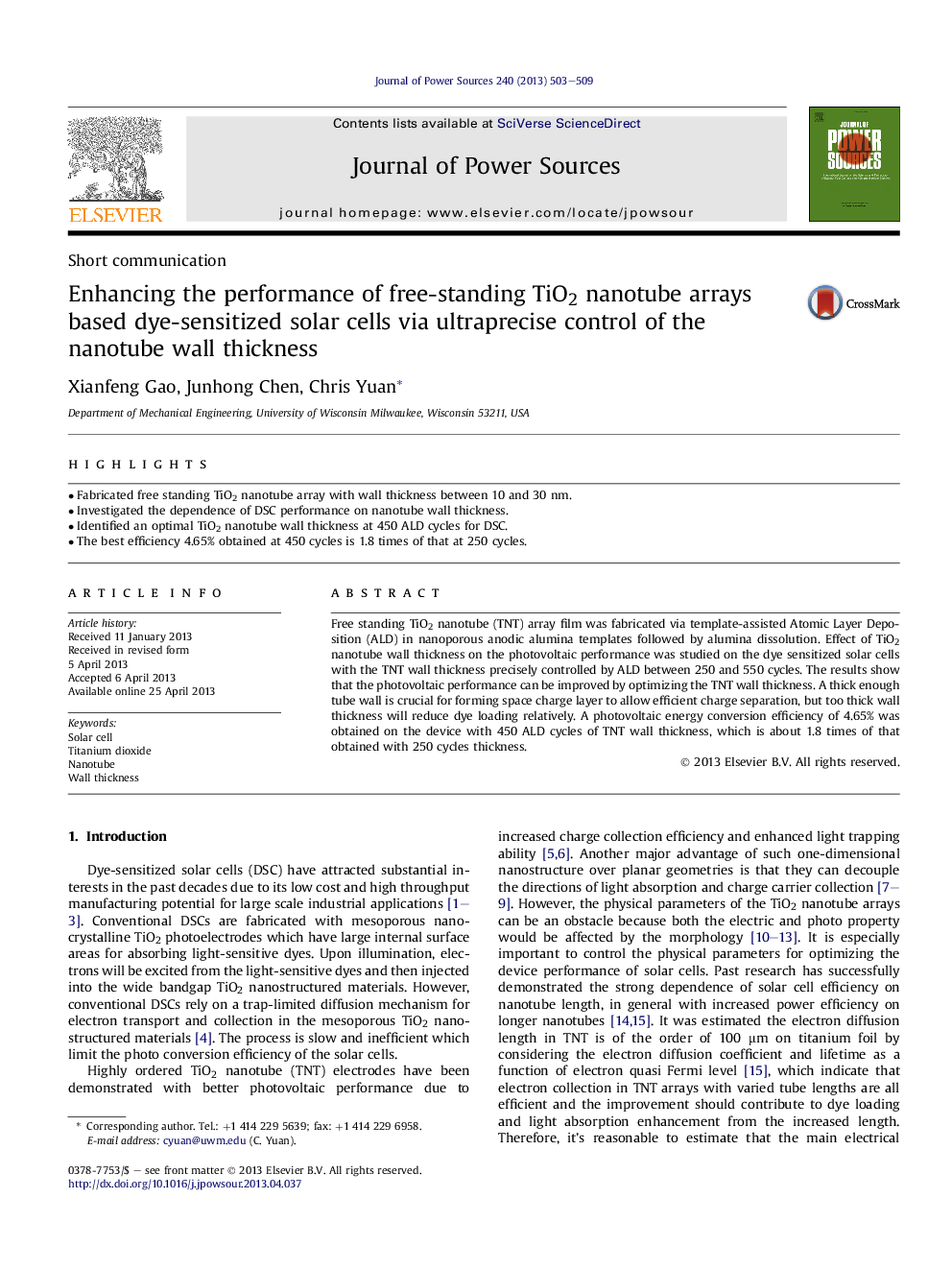| Article ID | Journal | Published Year | Pages | File Type |
|---|---|---|---|---|
| 7740752 | Journal of Power Sources | 2013 | 7 Pages |
Abstract
Free standing TiO2 nanotube (TNT) array film was fabricated via template-assisted Atomic Layer Deposition (ALD) in nanoporous anodic alumina templates followed by alumina dissolution. Effect of TiO2 nanotube wall thickness on the photovoltaic performance was studied on the dye sensitized solar cells with the TNT wall thickness precisely controlled by ALD between 250 and 550 cycles. The results show that the photovoltaic performance can be improved by optimizing the TNT wall thickness. A thick enough tube wall is crucial for forming space charge layer to allow efficient charge separation, but too thick wall thickness will reduce dye loading relatively. A photovoltaic energy conversion efficiency of 4.65% was obtained on the device with 450 ALD cycles of TNT wall thickness, which is about 1.8 times of that obtained with 250 cycles thickness.
Related Topics
Physical Sciences and Engineering
Chemistry
Electrochemistry
Authors
Xianfeng Gao, Junhong Chen, Chris Yuan,
